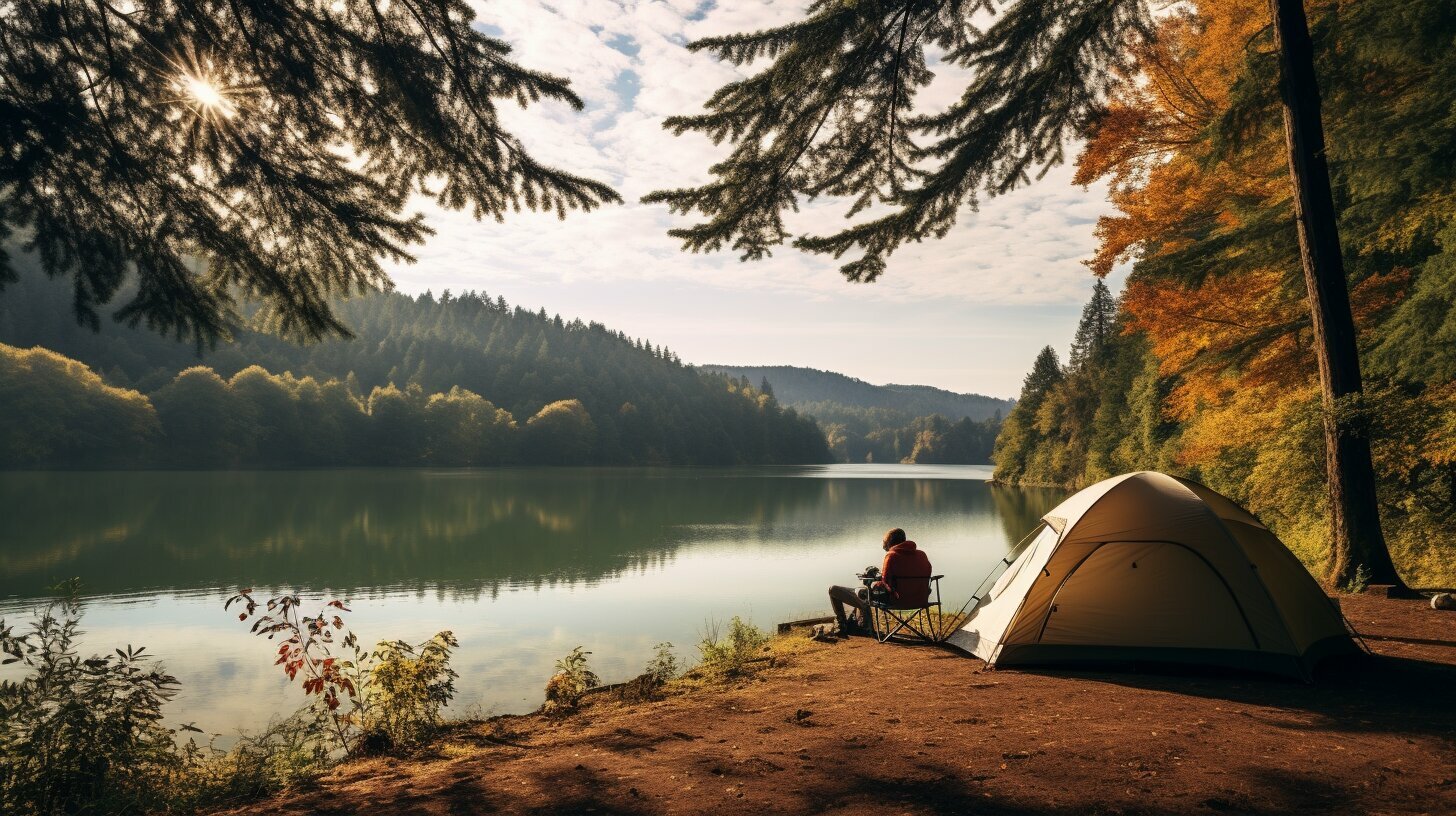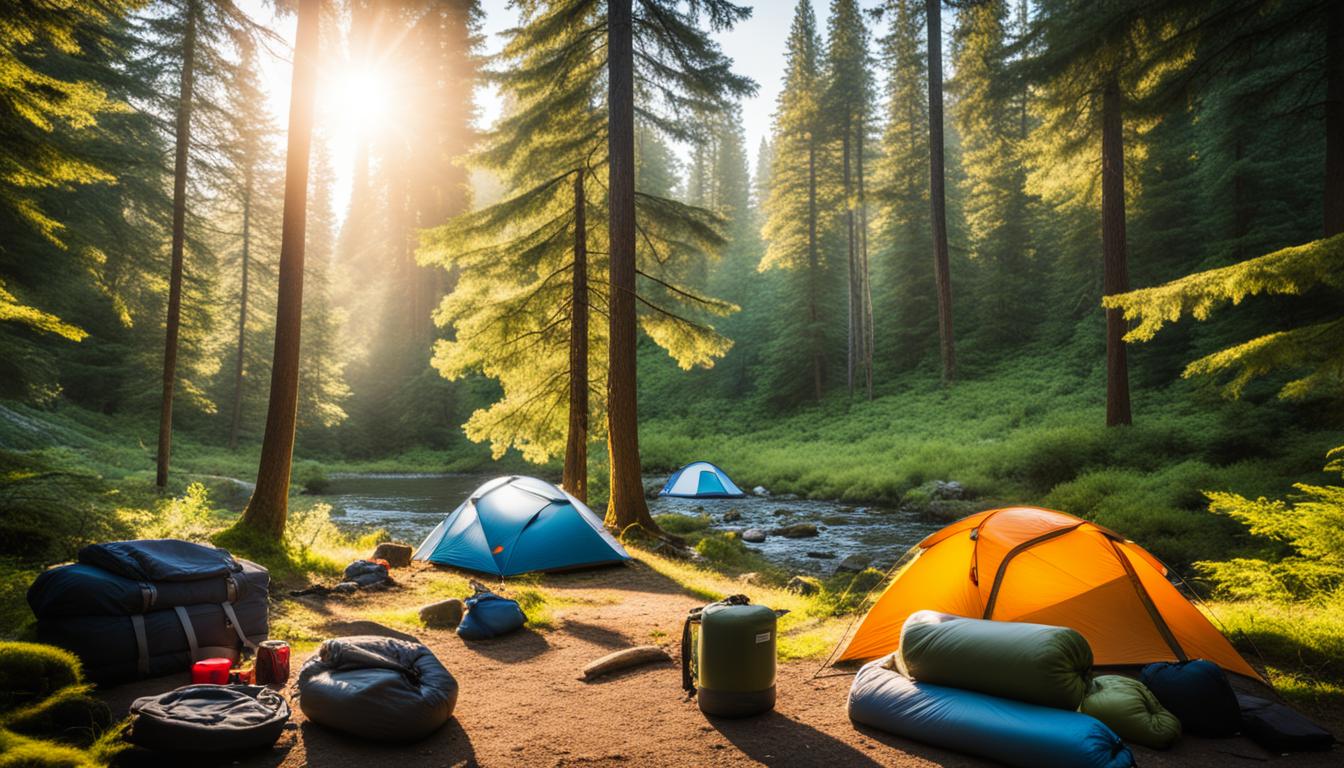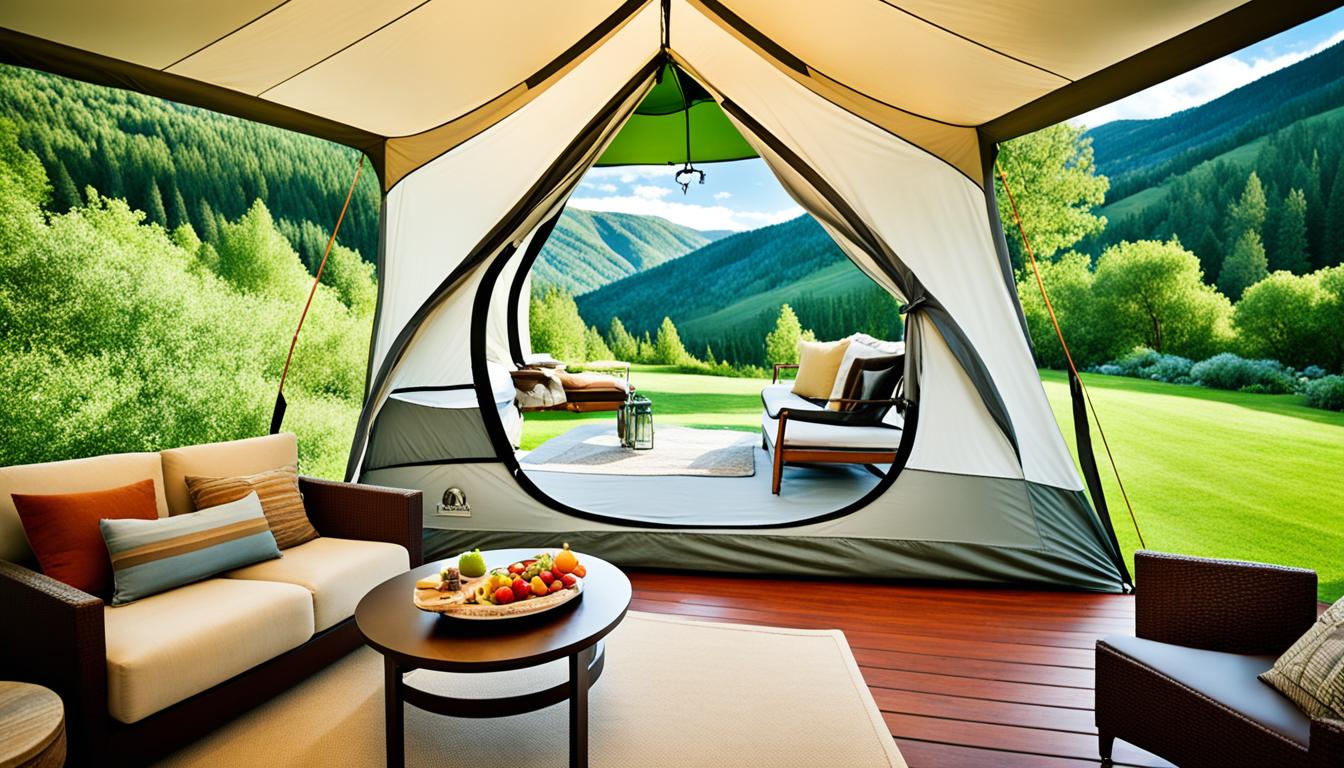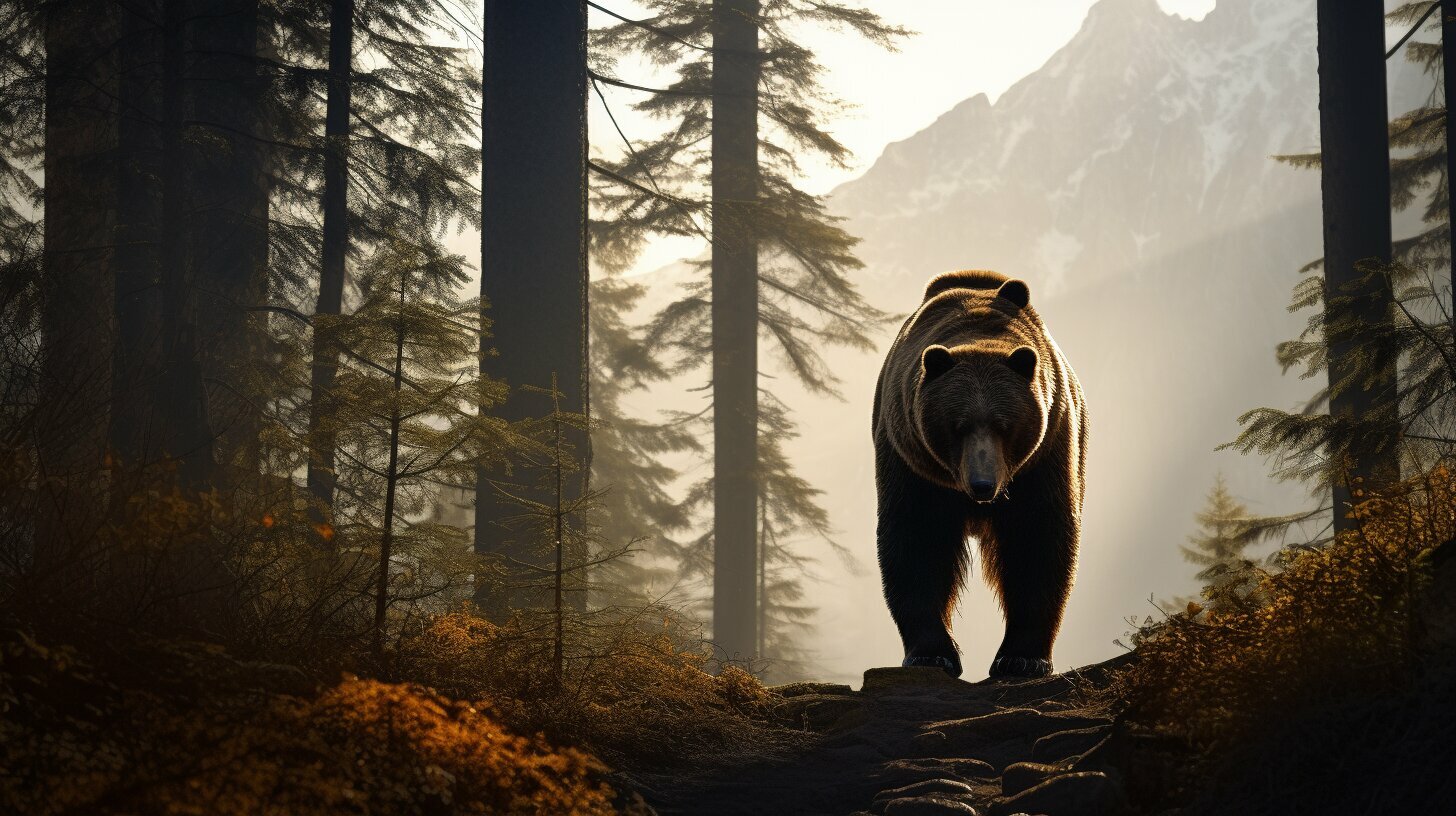If you’re an outdoor enthusiast looking for an adventurous and unique camping experience, backcountry camping might be just what you need. Unlike traditional campgrounds, backcountry camping involves venturing out into remote and less-traveled areas to set up campsites. It can be a great way to get away from the crowds and immerse yourself in nature.
However, before embarking on a backcountry camping trip, it’s important to understand the essentials of this type of camping to ensure your safety and comfort. In this guide, we’ll cover everything you need to know about planning and preparing for your backcountry camping trip, selecting the right gear, safety precautions to take, choosing the perfect camping location, and much more.
Key Takeaways
- Backcountry camping involves venturing out into remote and less-traveled areas to set up campsites.
- It’s important to understand the essentials of backcountry camping to ensure your safety and comfort.
- This guide covers everything you need to know about planning and preparing for your backcountry camping trip, selecting the right gear, safety precautions to take, choosing the perfect camping location, and much more.
Planning Your Backcountry Camping Trip
Before embarking on your backcountry camping adventure, it is important to plan and prepare for your trip. By doing so, you can ensure that you have everything you need to make the most of your outdoor experience.
Choosing Your Camping Location
One of the first steps in planning your backcountry camping trip is to choose your camping location. Consider the level of difficulty you are comfortable with, the distance you are willing to travel, and the type of scenery you want to experience. Research different camping locations and choose one that fits your needs.
Disclosure: When you buy through links on our site, we may earn an affiliate commission.
Create Your Camping Checklist
Once you have chosen your camping location, create a camping checklist to ensure that you have all the necessary gear and supplies. This should include your tent, sleeping bag, cooking equipment, food and water, navigation tools, and first aid kit. Use a camping checklist to make sure you don’t forget any essentials before heading out into the wilderness.
Pack Light, Pack Right
Packing light is essential when it comes to backcountry camping. Choose lightweight camping gear and pack only what you need. Leave non-essential items at home to avoid carrying unnecessary weight on your back. Remember to distribute the weight evenly in your backpack to maintain balance and reduce strain on your back.
Additional Camping Tips
- Bring extra layers of clothing, as temperatures can drop significantly at night
- Learn basic navigation skills and carry a map and compass
- Inform someone of your trip itinerary and expected return date
- Check weather conditions before heading out and prepare accordingly
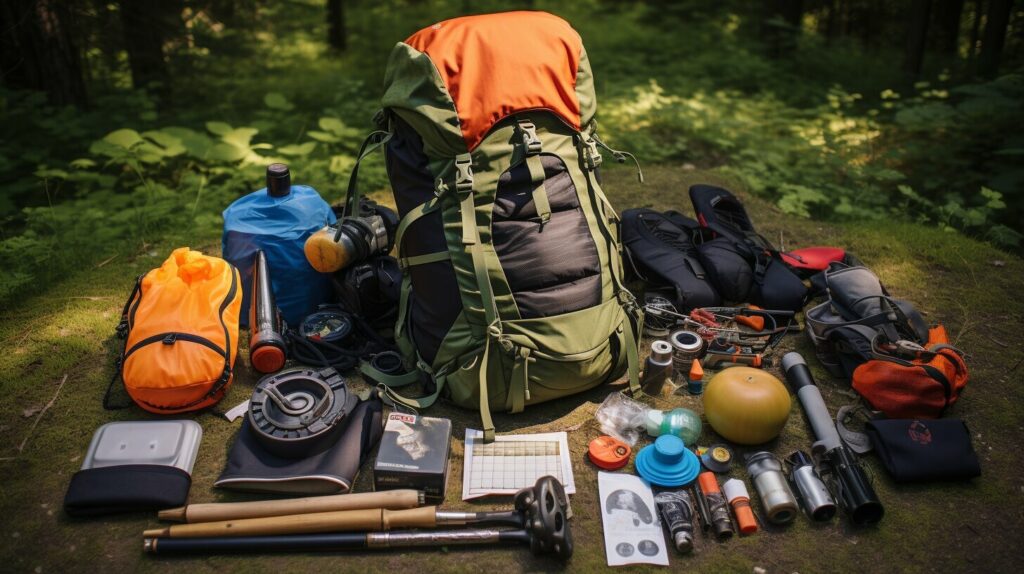
“Remember, failing to plan is planning to fail. Take the time to plan and prepare for your backcountry camping trip to ensure a safe and enjoyable adventure.”
Selecting the Right Camping Gear
When it comes to backcountry camping, having the right gear can make all the difference in your camping experience. Here are some camping essentials to consider when selecting the right gear:
| Item | Considerations |
|---|---|
| Tent | Consider the size, weight, and weather resistance of the tent. Look for a tent with ample headroom and sufficient ventilation. |
| Sleeping bag and pad | Choose a sleeping bag and pad that offer the right level of insulation and comfort for the expected temperatures. Look for a sleeping pad that is lightweight, durable, and easy to pack. |
| Cooking equipment | Consider the size, weight, and functionality of your cooking equipment. Look for lightweight and durable pots, pans, and utensils that can handle the demands of backcountry cooking. Don’t forget to bring a reliable stove and fuel. |
| Navigation tools | Bring a reliable map and compass, and make sure you know how to use them. Consider bringing a GPS device as well. |
| Backpack | Choose a backpack that is comfortable, lightweight, and has the right amount of space for your gear. Look for a backpack with adjustable straps and a padded back panel for maximum comfort. |
| Headlamp | Bring a reliable and durable headlamp with extra batteries. Look for a headlamp with a red light option to preserve night vision. |
Remember to pack light and efficiently. Choose gear that is multipurpose, compact, and lightweight. Test all of your gear before heading out to ensure that it is in good working order. This will save you headaches in the backcountry and ensure a more enjoyable experience.
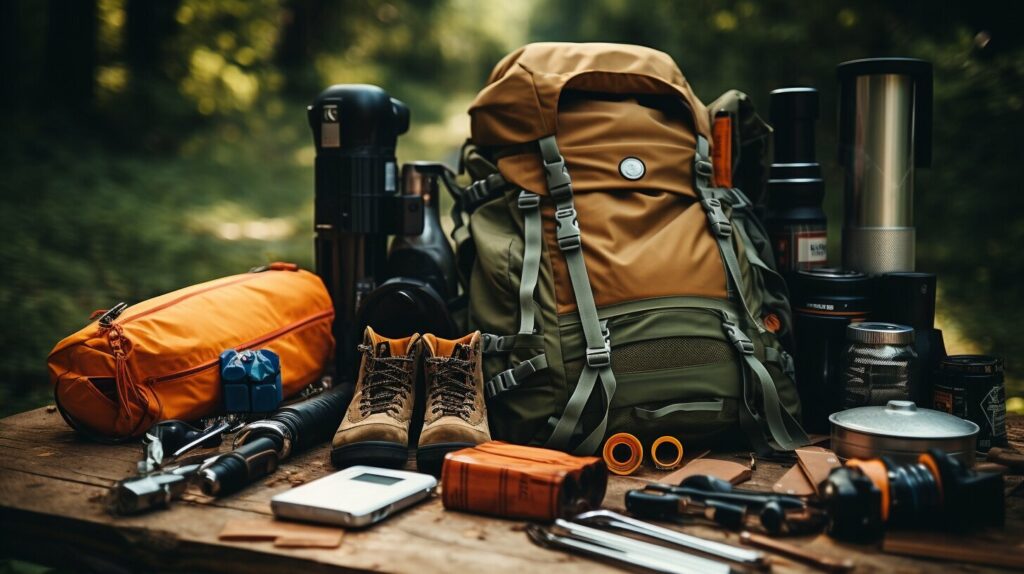
Safety Precautions for Backcountry Camping
When camping in the backcountry, it’s important to take necessary safety precautions to ensure a safe and enjoyable experience. Here are some camping essentials to keep in mind:
Camping Safety Gear
Always pack a first aid kit, emergency whistle, signaling device, flashlight, and a multi-tool whenever you head into the wilderness. These camping essentials can help you address minor injuries, call for help, and navigate through the woods in cases of low visibility.
Food Storage and Handling
Proper food storage is crucial when camping in bear and other wildlife country. Keep food and scented items (such as toiletries) in a bear-resistant container or a bear bag hung from a tall tree. Never keep food inside your tent or hammock. Cook food at least 100 yards from your sleeping area and store leftovers and garbage in a bear-resistant manner.
Wildlife Encounters
Be alert and aware of your surroundings and potential wildlife encounters. Make noise while hiking and store food properly as mentioned above. Keep a safe distance from wildlife and do not approach or feed them. If you bear or cougar encounter occurs, attempt to stand tall and raise your arms up, making yourself look larger. Do not run or turn your back.
Fire Safety
Before building a campfire, check with the local authorities if campfires are permitted at the time. Designated fire pits and rings should be used when possible, or you can create your own using rocks. Never leave a campfire unattended and always ensure it is completely extinguished before you leave. A bucket or a water source should be within reach.
Camping safety is an important aspect of backcountry camping. By taking the necessary precautions, you can minimize risks and enjoy a safe, enjoyable experience in the wilderness.
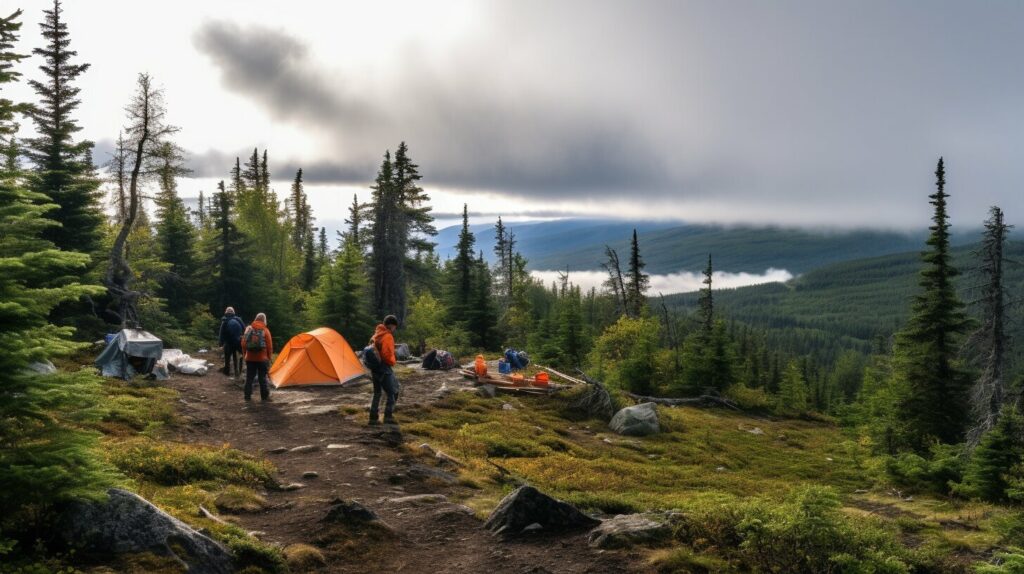
Choosing the Perfect Camping Location
When it comes to backcountry camping, one of the most important decisions you’ll make is choosing the perfect camping location. With so many beautiful outdoor locations to choose from, it can be overwhelming to decide where to go. Here are some tips to help you choose:
- Consider the terrain: Do you prefer mountains, forests, or other wilderness areas? Look for a location that offers the type of terrain and scenery that you enjoy.
- Research campsites: Before heading out, research campsites in the area you plan to visit. Look for sites that offer the amenities you need, such as water sources and restroom facilities.
- Check for permits: Some wilderness areas require permits for camping. Be sure to check ahead of time to ensure you have the necessary permits to camp legally.
- Think about accessibility: Consider how far you’re willing to hike or travel to reach your destination. If you’re not experienced with backcountry camping, a shorter hike may be a better option.
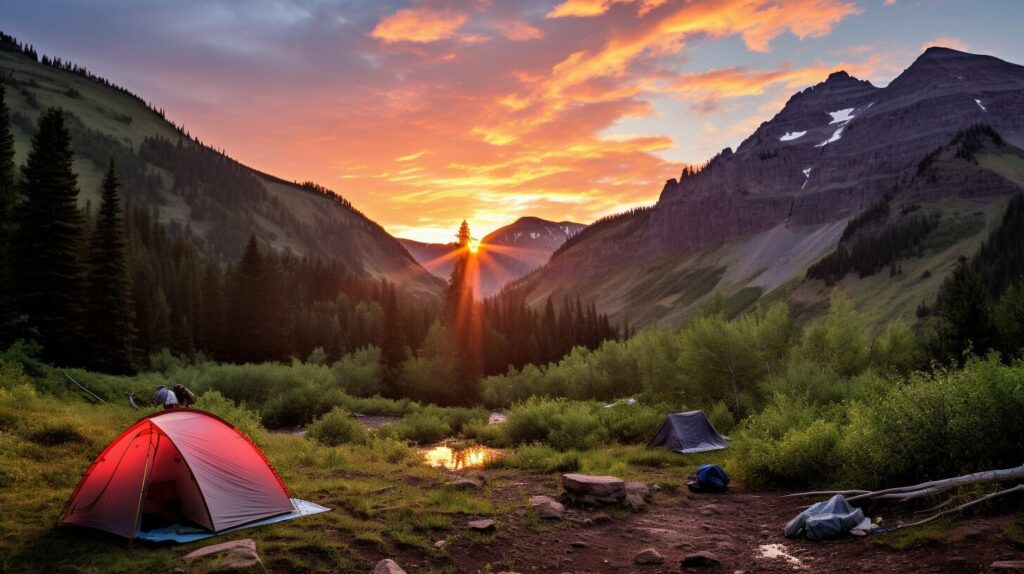
Depending on the type of experience you’re looking for, you may want to consider camping in a national park, wilderness area, or other designated camping location. These locations often offer well-maintained trails, designated campsites, and other amenities that can make your camping experience more enjoyable.
If you’re looking for a more remote camping experience, consider camping in a less-traveled area of the wilderness. These locations may require more planning and preparation, but they can offer a more secluded and peaceful camping experience.
Setting Up Camp in the Wilderness
Now that you’ve chosen your camping location and gathered your gear, it’s time to set up camp in the wilderness. Follow these steps to ensure a comfortable and safe stay:
Choose a Suitable Site
Look for a flat area with soft ground to pitch your tent. Avoid camping near water sources, as they may attract wildlife. Make sure there are no dead trees or branches that could fall on your tent.
Pitch Your Tent
Follow the instructions to set up your tent, making sure it’s properly staked down. Consider using a footprint to protect the tent floor from sharp rocks and debris.
Set up a Campfire
If campfires are allowed in your camping area, choose a designated fire ring or create your own using rocks. Keep the fire small and under control, and never leave it unattended. Make sure to extinguish the fire completely before leaving your campsite.
Organize Your Camping Gear
Keep your gear organized and easily accessible. Store food away from your sleeping area in a bear-resistant container. Hang garbage and food waste from a tree to keep it away from animals.
| Camping Essential | Description |
|---|---|
| Tent | A shelter for sleeping and protection from the elements. |
| Sleeping Bag | A warm and comfortable sleeping bag suited for the weather conditions. |
| Sleeping Pad | A cushioned pad to provide insulation and support for sleeping. |
| Camp Stove and Fuel | A portable stove and fuel for cooking meals. |
| Cookware and Utensils | Pots, pans, and utensils for cooking and eating meals. |
| Headlamp or Flashlight | A reliable light source for navigating in the dark. |
| Map and Compass | A navigational tool for finding your way through the wilderness. |
With your campsite set up, you’re ready to enjoy your backcountry camping adventure. Don’t forget to take in the stunning natural surroundings and appreciate the beauty of the wilderness.
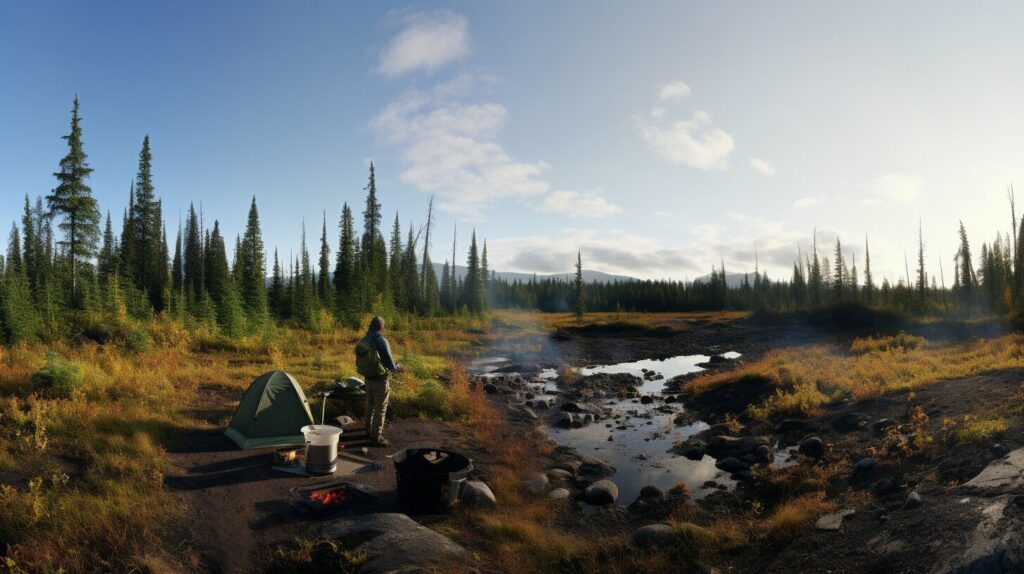
Cooking and Food Considerations
When it comes to backcountry camping, cooking and food considerations are essential to ensure you have a fulfilling and nourishing experience. Here are some camping hacks and tips to help you make the most of your camping essentials:
- Plan your meals and snacks: Make a list of the meals and snacks you will need for the duration of your camping trip. Consider the nutritional value and ease of preparation for each meal.
- Pack the right camping gear: Make sure you have the right camping gear for cooking, such as stoves, fuel, cooking pots, and utensils. Lightweight and compact gear is best for backcountry camping.
- Choose your foods wisely: Opt for foods that are lightweight, non-perishable, and easy to prepare. Dehydrated meals, nuts, granola bars, and dried fruit are good options.
- Store food properly: Use bear-resistant containers to store your food and hang them at least 100 yards away from your campsite. This will help to prevent attracting bears and other wildlife to your area.
- Cook creatively: Experiment with different camping food hacks, such as cooking over a campfire, using foil packets, or making one-pot meals.
By following these camping essentials and hacks, you can enjoy delicious and nutritious meals while camping in the backcountry. Don’t forget to pack some camping hacks and essentials to elevate your camping experience – like a portable espresso maker or a foldable table!
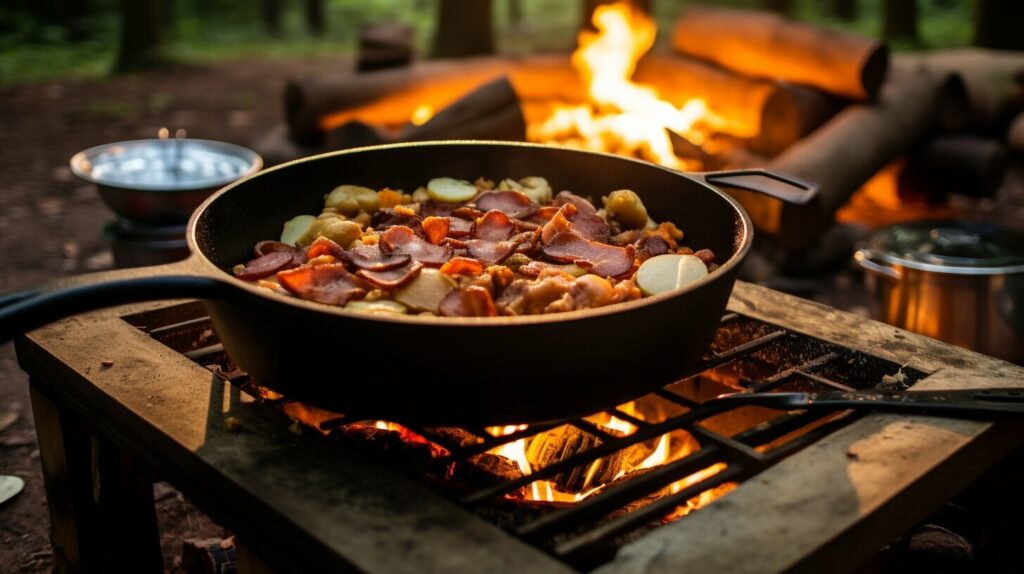
Exploring the Wilderness
When camping in the backcountry, the wilderness becomes your playground. There is no shortage of outdoor activities to experience and adventures to be had. Whether you prefer hiking, fishing, wildlife viewing, or just taking in the natural beauty around you, there is something for everyone.
To make the most of your outdoor adventure, research the camping location you’ve chosen beforehand. Find out what activities are available and plan accordingly. If you’re an avid hiker, look for trails that match your skill level. If you’re interested in fishing, research the best spots and bring the appropriate gear.
Some popular camping locations for outdoor adventure include national parks, wilderness areas, and forests. National parks offer a range of recreational opportunities, including hiking, fishing, and wildlife viewing, while wilderness areas provide a more rugged, secluded experience. Forests offer a mix of both, with miles of hiking trails and abundant wildlife to discover.
Remember to always practice Leave No Trace principles while exploring the wilderness. This means leaving natural areas untouched and taking care not to disturb wildlife habitats. Stick to designated trails and campsites, and avoid disturbing vegetation and wildlife.
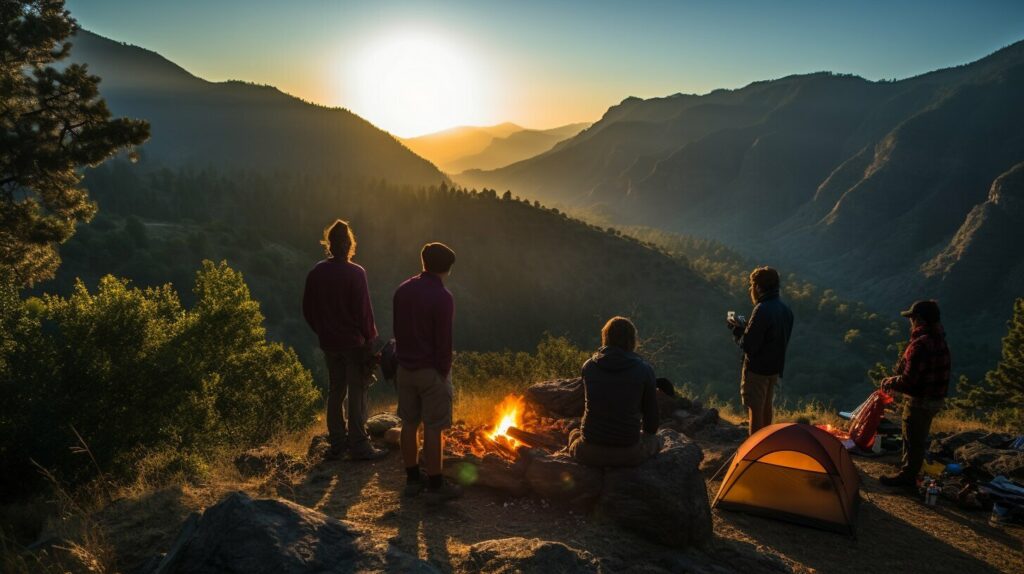
With so much to explore, it’s easy to get caught up in the excitement of the great outdoors. However, it’s important to stay safe and be prepared. Always bring a map and compass, and know how to use them. Let someone know where you’re going and when you plan to return. And always be aware of your surroundings and any potential hazards.
By following these tips and using common sense, you can have a safe and enjoyable outdoor adventure while camping in the backcountry.
Leave No Trace Principles
When camping in the wilderness, it’s crucial to minimize your impact on the environment. This means adhering to Leave No Trace (LNT) principles, which are a set of guidelines for responsible outdoor ethics. By following these principles, you can help preserve the natural beauty of the wilderness and ensure that future generations can enjoy it as well.
The seven LNT principles are:
- Plan ahead and prepare: Before heading out on your camping trip, research the rules and regulations of the area you’ll be visiting. Make sure you have all the necessary gear and supplies, and plan your meals and activities accordingly.
- Travel and camp on durable surfaces: Stick to established trails and campsites whenever possible to minimize your impact on the environment. If you must venture off-trail, choose a durable surface like rock or gravel.
- Dispose of waste properly: Pack out all of your trash and litter, including food scraps and pet waste. Use established toilet facilities when available, or dig a small hole at least 200 feet from water sources to bury human waste.
- Leave what you find: Don’t disturb natural or cultural artifacts, and avoid building structures or furniture in the wilderness.
- Minimize campfire impact: Use established fire rings when available, or build a fire in a fire pan. Keep fires small and only burn sticks and twigs, not larger logs.
- Respect wildlife: Observe animals from a distance and don’t approach or feed them. Store food and trash in bear-resistant containers, or hang it at least 10 feet off the ground and 4 feet away from the trunk of a tree.
- Be considerate of other visitors: Respect the privacy and tranquility of other campers, and keep noise levels to a minimum. Yield the trail to other hikers and bikers, and avoid blocking viewpoints or access to water sources.
By following these LNT principles, you can help preserve the wilderness for future generations and ensure that it remains a pristine and beautiful place to explore.
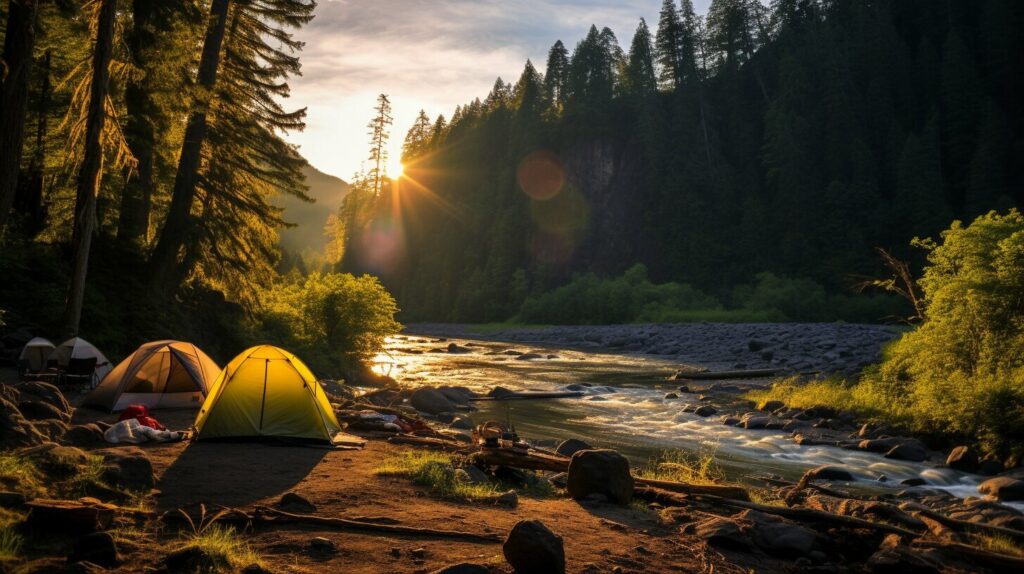
Dealing with Unexpected Situations
Despite careful planning and preparation, unexpected situations can still arise during a backcountry camping trip. It’s important to stay calm and collected in these situations and take the necessary steps to ensure your safety.
Here are some tips for dealing with unexpected situations while camping in the wilderness:
- Inclement weather: Check the weather forecast before your trip and pack appropriate gear for any potential weather conditions. If you’re caught in a storm, seek shelter in your tent or under a tarp and wait for it to pass.
- Getting lost: Always carry a map and compass and make note of prominent landmarks. If you do get lost, stay put and avoid wandering aimlessly. Wait for rescue or try to retrace your steps back to a familiar location.
- Wildlife encounters: Never approach or feed wild animals, and always store your food and trash in a bear-resistant container or hang it from a tree away from your campsite. If you do encounter a wild animal, make noise to scare it away and give it plenty of space.
- Medical emergencies: Carry a first aid kit and make sure you know basic first aid procedures. If someone in your group is injured or becomes ill, assess the situation and seek medical help if necessary.
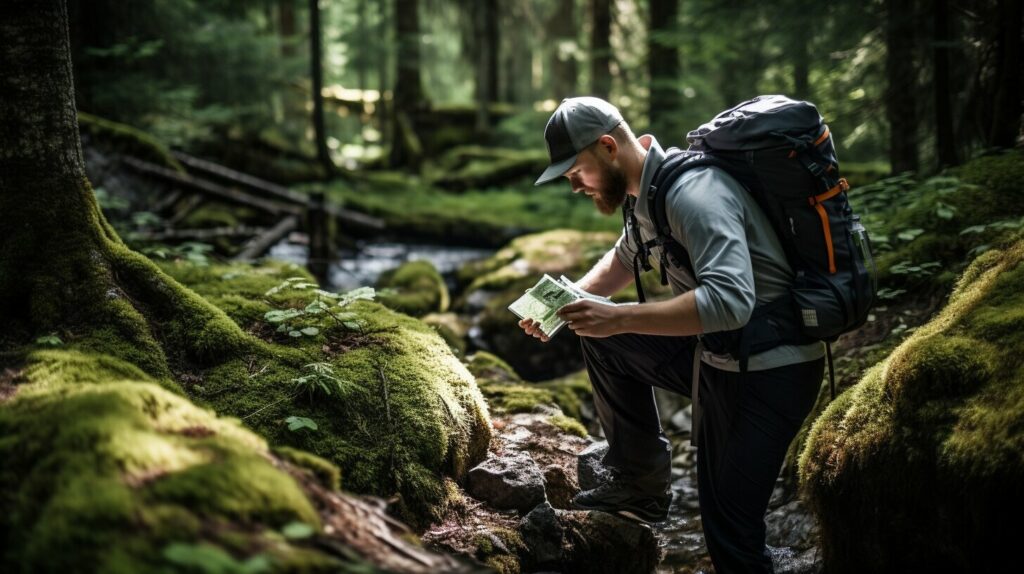
Remember, the key to dealing with unexpected situations is to be prepared and stay calm. With the right mindset and tools, you can handle anything that comes your way during your backcountry camping adventure.
Tips for a Memorable Backcountry Camping Experience
Backcountry camping offers a unique opportunity to disconnect from the world and immerse yourself in nature. To make the most of your outdoor adventure, consider these camping tips and hacks:
- Bring a lightweight hammock – A hammock is a great alternative to a heavy tent and can be easily set up between two trees. It takes up less space in your backpack and allows you to enjoy the view.
- Use a portable water filter – Instead of carrying multiple water bottles, bring a portable water filter that allows you to drink from almost any natural source.
- Download offline maps – Don’t rely solely on your GPS device as signal can be spotty in the backcountry. Download offline maps ahead of time to ensure you won’t get lost.
- Create a cozy sleep setup – Add some warmth and comfort to your sleeping bag by placing a foam pad underneath and stuffing some extra clothing in the bag.
- Bring a solar-powered charger – Keep your electronic devices charged with a solar-powered charger. It is an eco-friendly solution and allows you to keep in touch with loved ones and capture all the amazing photos.
Remember to respect and care for the wilderness while camping. Take nothing but pictures, leave nothing but footprints, and follow the Leave No Trace principles. With these tips and a sense of adventure, your backcountry camping experience is sure to be a memorable one.
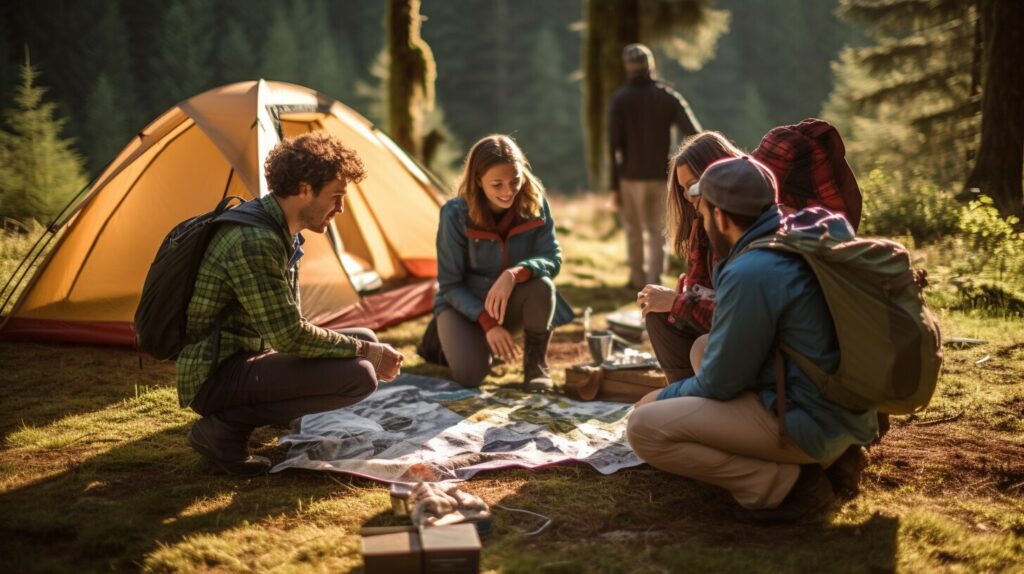
Tips for a Memorable Backcountry Camping Experience
Embarking on a backcountry camping trip can be an unforgettable experience that allows you to connect with nature in a unique and meaningful way. To make the most out of your adventure, try the following tips:
Bring a Camera
Backcountry camping offers a plethora of opportunities to capture stunning photographs of natural landscapes, wildlife, and starry skies. Don’t forget to pack a camera or smartphone to document your trip!
Stargaze
The absence of light pollution in remote wilderness areas creates ideal conditions for stargazing. Take advantage of the opportunity to spot constellations, shooting stars, and even the Milky Way.
Campfire Storytelling
Gather around the campfire with your fellow campers and share stories, jokes, and memories. This is a great way to bond with your fellow adventurers and create lasting memories.
Be Mindful of Noise
While enjoying your camping experience, it’s important to be mindful of noise levels. Keep loud conversations and music to a minimum so as not to disturb other campers and wildlife.
Respect Wildlife
Remember that you are a guest in the animals’ natural habitat. Keep a safe distance from wildlife, avoid feeding them, and always store food securely to prevent attracting them to your campsite.
Enjoy the Moment
Take time to enjoy the moment and fully immerse yourself in the backcountry camping experience. Disconnect from technology and embrace the simplicity and beauty of nature.
By following these tips, you can make the most of your backcountry camping experience and create memories that will last a lifetime. Happy camping!
FAQ
Q: What is backcountry camping?
A: Backcountry camping refers to camping in remote, undeveloped areas away from traditional campgrounds and amenities. It often involves hiking or backpacking to reach the camping location.
Q: How do I choose a camping location?
A: When selecting a camping location, consider factors such as the level of solitude desired, available activities, and accessibility. National parks, wilderness areas, and forests are popular options.
Q: What essential gear do I need for backcountry camping?
A: Essential gear for backcountry camping includes a tent, sleeping bag, cooking equipment, navigation tools, and appropriate clothing. It’s important to pack light and efficiently to ensure a comfortable experience.
Q: What safety precautions should I take while camping in the backcountry?
A: Safety precautions for backcountry camping include proper food storage to avoid wildlife encounters, knowledge of first aid techniques, and having an emergency communication device. It’s important to be prepared for potential risks.
Q: How do I set up a campsite in the wilderness?
A: Setting up a campsite in the wilderness involves finding a suitable site, pitching a tent, setting up a campfire, and organizing camping gear. Follow Leave No Trace principles to minimize environmental impact.
Q: What cooking and food considerations are important for backcountry camping?
A: When it comes to cooking and food for backcountry camping, plan meals in advance, store food properly to prevent wildlife encounters, and use cooking techniques suitable for outdoor settings. Keep food safe and secure.
Q: What outdoor activities can I do while camping in the backcountry?
A: Camping in the backcountry offers opportunities for hiking, fishing, wildlife viewing, and other outdoor activities. Research the area you’ll be camping in to discover specific recreational opportunities.
Q: How do I minimize environmental impact while camping in the wilderness?
A: Practice Leave No Trace principles, which include minimizing campfire impacts, packing out trash, and respecting wildlife and vegetation. Be a responsible steward of the environment.
Q: What should I do in unexpected situations while backcountry camping?
A: Be prepared for unexpected situations such as inclement weather, getting lost, or encountering wildlife. Carry appropriate gear, stay calm, and follow safety protocols.
Q: How can I enhance my backcountry camping experience?
A: Make your backcountry camping experience memorable by engaging in activities like photography, stargazing, and campfire storytelling. Take time to appreciate the natural beauty and create lasting memories.

